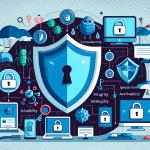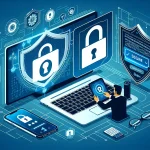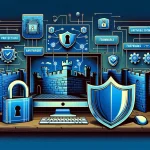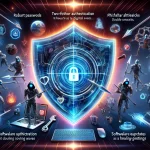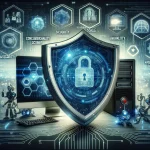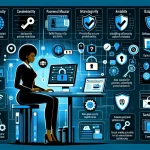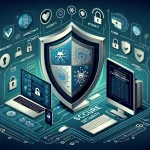
Cybersecurity for Beginners: A Complete Guide to Staying Safe Online
Estimated reading time: 15 minutes
Key Takeaways
- Understand Cybersecurity Basics: Grasp the fundamental concepts to protect yourself online.
- Recognize Common Threats: Be aware of malware, phishing, and other cyber threats.
- Implement Strong Practices: Use strong passwords, update software regularly, and secure your networks.
- Protect Personal Information: Safeguard your data to prevent identity theft and fraud.
- Stay Informed: Keep up with evolving cyber threats and security measures.
Table of Contents
- What is Cybersecurity?
- Why Cyber Safety Matters
- Common Cyber Threats
- How to Protect Yourself Online
- Safe Online Practices
- Advanced Security Measures
- Protecting Your Personal Information
- Cybersecurity Resources
- Conclusion
- Frequently Asked Questions
What is Cybersecurity?
Cybersecurity is your digital shield against online threats. It encompasses all the tools, practices, and habits that protect your computers, smartphones, networks, and personal data from unauthorized access or criminal use.
At its core, cybersecurity revolves around three fundamental principles known as the CIA triad:
- Confidentiality: Keeping your information private and accessible only to authorized users
- Integrity: Ensuring your data remains accurate and unaltered
- Availability: Making sure you can access your systems and data when needed
To better understand cybersecurity, you should familiarize yourself with these essential terms:
- Malware: Harmful software designed to damage or gain unauthorized access to your devices
- Phishing: Deceptive messages trying to steal your personal information
- Encryption: Technology that scrambles your data to protect it from unauthorized access
Source: https://online.adelaide.edu.au/blog/cyber-security-fundamentals
Why Cyber Safety Matters
The stakes in cybersecurity have never been higher. Cyber attacks are becoming more sophisticated and frequent, resulting in:
- Identity theft affecting millions of people annually
- Financial losses totaling billions of dollars worldwide
- Compromised personal information leading to fraud
- Disrupted personal and business operations
Without proper cyber safety practices, you're leaving yourself vulnerable to these growing threats. Taking proactive steps to protect yourself isn't optional—it's necessary.
Source: FTC Cybersecurity Factsheets
Common Cyber Threats
Understanding common cyber threats is the first step in defending against them. Here are some prevalent dangers:
1. Malware Attacks
Malware includes viruses, worms, trojans, and spyware that infiltrate your devices, often without your knowledge. They can:
- Steal sensitive data
- Monitor your activities
- Damage or disable your systems
2. Phishing Scams
Phishing involves fraudulent communications that appear to come from reputable sources. These scams aim to:
- Obtain your login credentials
- Access your financial information
- Install malicious software
3. Ransomware
Ransomware encrypts your data and demands payment for its release. It can lead to:
- Loss of important files
- Financial extortion
- Business disruption
Source: Australian Cyber Security Centre
How to Protect Yourself Online
Protecting yourself online involves a combination of smart practices and utilizing the right tools. Here's how:
Use Strong, Unique Passwords
- Create complex passwords with a mix of letters, numbers, and symbols
- Use a different password for each account
- Consider using a reputable password manager
Enable Two-Factor Authentication (2FA)
2FA adds an extra layer of security by requiring a second form of verification:
- An SMS code sent to your phone
- A biometric verification like fingerprint or facial recognition
- An authentication app code
Keep Software Updated
Regular updates patch security vulnerabilities:
- Enable automatic updates for your operating system and applications
- Update antivirus and anti-malware definitions
- Regularly check for firmware updates on devices
Source: Stay Safe Online
Safe Online Practices
Adopting safe online habits can significantly reduce your risk:
Be Wary of Suspicious Emails and Links
- Avoid clicking on links or downloading attachments from unknown sources
- Verify the sender's email address
- Look for signs of phishing, such as urgent language or poor spelling
Secure Your Home Network
Protect your Wi-Fi and network devices:
- Change default router passwords
- Use WPA3 or WPA2 encryption
- Disable remote access and UPnP if not needed
Use Antivirus and Anti-Malware Software
- Install reputable security software
- Schedule regular scans
- Keep the software updated
Advanced Security Measures
For enhanced protection, consider these advanced measures:
Use a Virtual Private Network (VPN)
A VPN encrypts your internet connection, providing privacy and security, especially on public Wi-Fi networks.
Employ Firewalls
Firewalls monitor incoming and outgoing network traffic based on security rules, acting as a barrier against unauthorized access.
Regular Data Backups
Routine backups protect your data from loss due to malware or system failures:
- Use external hard drives or cloud services
- Encrypt your backups
- Test backup restoration periodically
Protecting Your Personal Information
Your personal information is valuable. Protect it by:
Limiting Social Media Sharing
- Avoid posting sensitive information
- Adjust privacy settings to control who sees your content
- Be cautious with friend requests from unknown individuals
Being Cautious with Online Transactions
Ensure secure transactions by:
- Using trusted websites (look for HTTPS and padlock icon)
- Never saving payment information on sites
- Monitoring bank statements for unauthorized charges
Cybersecurity Resources
Stay informed and educated with these resources:
Conclusion
Navigating the digital world safely is an ongoing process. By understanding the basics of cybersecurity and implementing the practices outlined in this guide, you're taking significant steps toward protecting yourself online.
Stay vigilant, keep your knowledge updated, and regularly review your security measures. Your proactive efforts are essential in safeguarding your digital life.
Frequently Asked Questions
What is the most common type of cyber threat?
Phishing attacks are among the most common cyber threats. They involve fraudulent emails or messages designed to trick you into revealing sensitive information.
How often should I update my passwords?
It's recommended to update your passwords every 3 to 6 months. Additionally, immediately change any passwords that may have been compromised.
Is public Wi-Fi safe to use?
Public Wi-Fi networks are often unsecured and can be risky. If you must use them, avoid accessing sensitive information and consider using a VPN.
What should I do if I suspect a phishing attempt?
Do not click any links or download attachments. Report the attempt to your email provider and the organization being impersonated.
Why is two-factor authentication important?
Two-factor authentication adds an extra layer of security by requiring a second verification method, significantly reducing the risk of unauthorized access.

